11 high protein desserts to satisfy your sweet tooth
These tasty high protein desserts will help to fill you up and build lean muscle
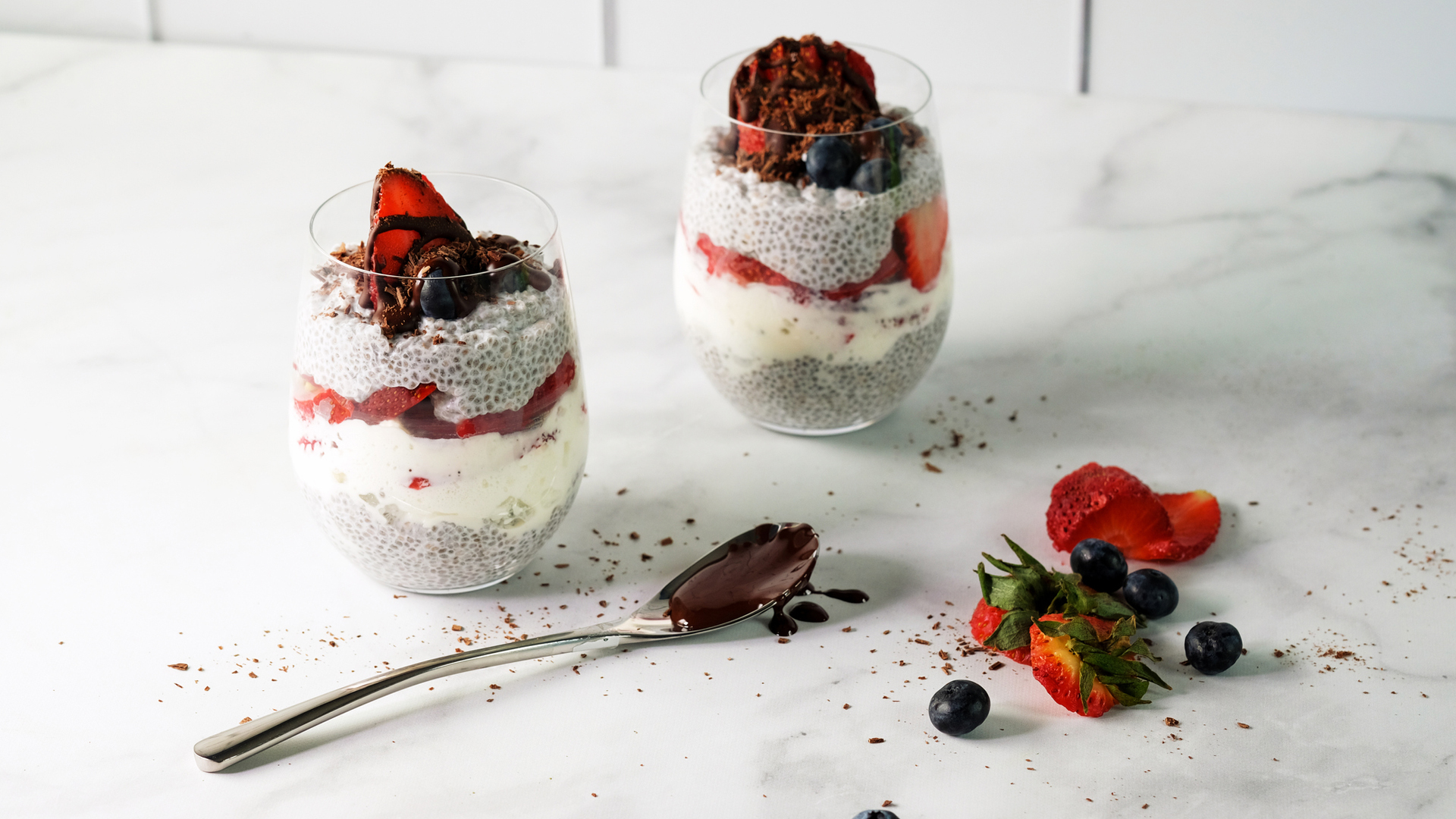

High protein desserts are one way to get your daily protein fix and satisfy your sweet tooth in one hit. Protein is a macronutrient essential for repairing and maintaining tissue, aiding growth, building muscle, boosting energy and immunity, regulating appetite, improving metabolism and weight maintenance.
Protein can also increase satiety – or fullness – so if weight loss is your goal, then try upping your intake. A study published in the journal Nutrition also found that women who ate a high protein yogurt as an afternoon snack were less hungry than those who ate chocolate. The yogurt eaters also consumed fewer calories at dinner.
The Recommended Dietary Allowance for protein is 0.8 grams per kilogram (2.2lbs) of body weight. So someone who weighs 160lbs (72kg), would need around 58g of protein a day. You may need more depending on your age, if you’re pregnant, or particularly active.
You can find protein in animal products, fish, eggs, tofu, nuts, cheese and legumes. You can also add supplements like the best protein powder for weight loss into your routine to help you hit your protein targets. In fact, these supplements can be used to create high protein desserts to satisfy your sweet tooth while meeting your health goals. Here are 11 tasty ideas to try.
1. Yogurt and fruit
“It’s a simple dessert, but one of the best,” says registered dietitian Juliette Kellow, “Yogurt is packed with protein so as a standalone dessert it’s a good choice. For something a little more exciting, serving it with fruit will add sweetness. Add nuts for an extra protein hit and some crunch. One tablespoon of flaked almonds adds 3.2g of protein.”

Juliette is a registered dietitian with a passion for food, diet, nutrition, and health. A member of the British Dietetic Association, she’s worked in the NHS, for the food industry, and is the former editor of Top Santé magazine. She works as a nutrition consultant for many food brands, industry and trade bodies, and PR agencies. She currently writes for a selection of magazines and newspapers, including Closer, the Daily Mirror, and the Daily Express, and is the author of the anti-aging book Eat Better Live Longer.
Kellow recommends choosing plain varieties such as Greek yogurt to avoid added sugar. You can freeze yogurt (or yogurt and pureed fruit) in molds for a high protein popsicle.
“Soya yogurt is a good alternative for anyone wanting a vegan or dairy-free option,” she says. “Yogurt also provides calcium, phosphorus, vitamins B2 and B12 and iodine. Fruit will add vitamin C, potassium and fiber.”
Get the Fit&Well Newsletter
Start your week with achievable workout ideas, health tips and wellbeing advice in your inbox.
2. Chocolate and banana mug cake
One of our favourite easy protein mug cake recipes, this dessert contains just five ingredients (chocolate protein powder, banana, baking powder, salt and egg whites) and takes five minutes cooking time in the microwave – plus it has a huge 32g of protein per serving!
You also get a good hit of nutrients from the banana, including fiber, potassium, vitamins B6 and C, antioxidants and phytonutrients (good for immunity and cell repair).
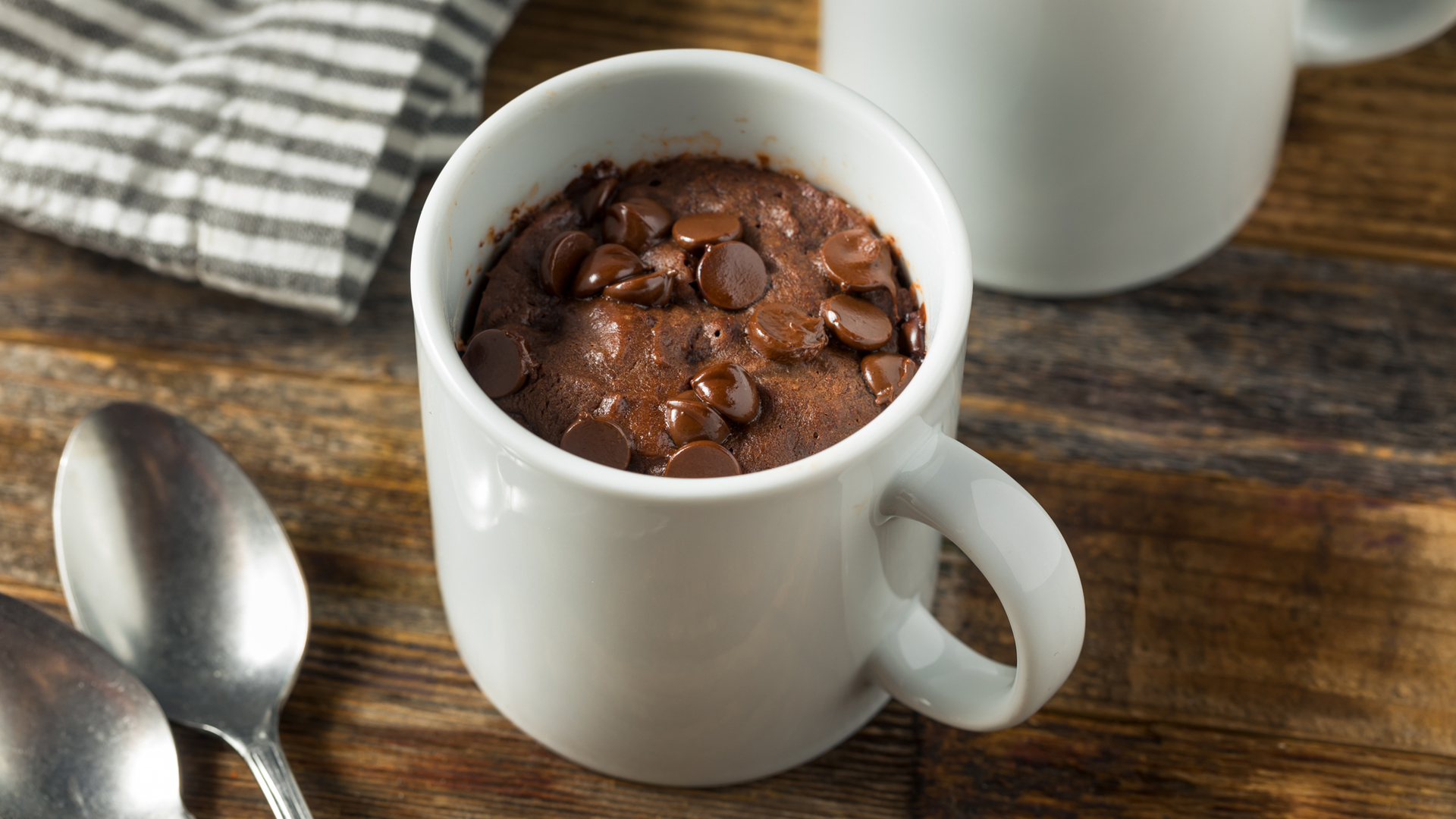
3. Single serve high protein brownies
Low in calories and sugar (they are sweetened with applesauce and sugar-free chocolate protein powder), high protein brownies are great if you have a sweet tooth and want to avoid that sugar high and crash often associated with regular brownies.
4. Cheesecake
Kellow says: “This uses soft cheese as the main ingredient, which, as well as protein, is a good source of phosphorus (important for healthy bones and teeth).
“It’s also rich in vitamin A, which keeps our immune system in good working order, and is vital for good skin and vision. A typical 120g slice of homemade cheesecake will give you 7.4g of protein.”
"Do watch the fat and calorie content though and stick to a small portion rather than a huge slab.”
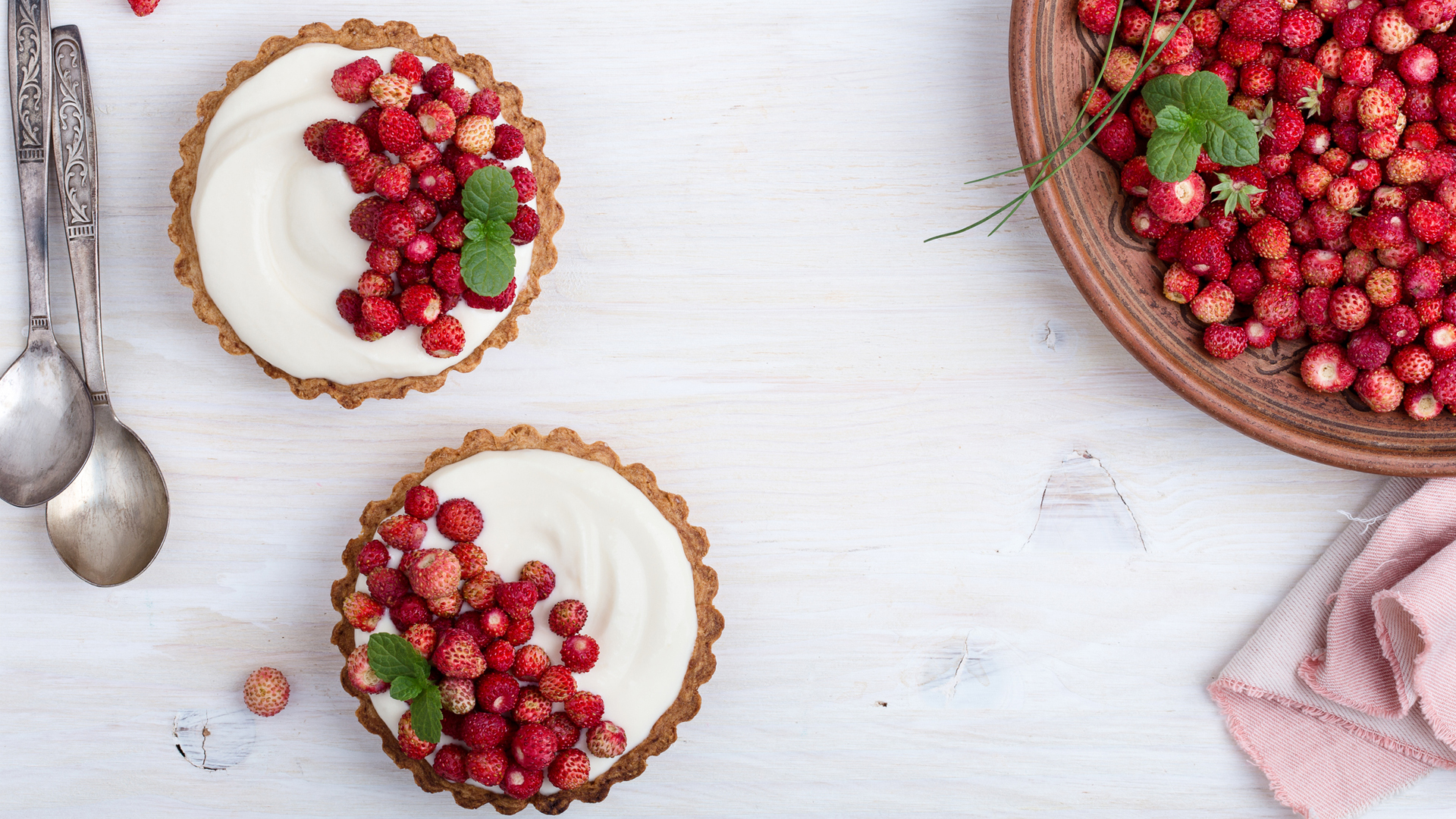
5. Bread and butter pudding
"This traditional British dessert uses egg and milk to pour over the bread and dried fruit and is rich in protein – 10.7g for a 170g portion,” says Kellow.
“It also has heaps of nutrients: it’s a source of potassium, which is important for our muscles and helps to keep blood pressure levels healthy, and it’s rich in calcium, phosphorus, vitamins B2 and B12 and immune-friendly selenium.
6. Low-carb, high protein waffles
Made from oats, low-fat cottage cheese, egg whites, vanilla and cinnamon and all whizzed in a blender, this healthy twist on breakfast waffles is an easy and quick way to boost your protein intake.
With a hefty hit from the eggs and cheese, you will also feel fuller for longer from the fiber in the oats.
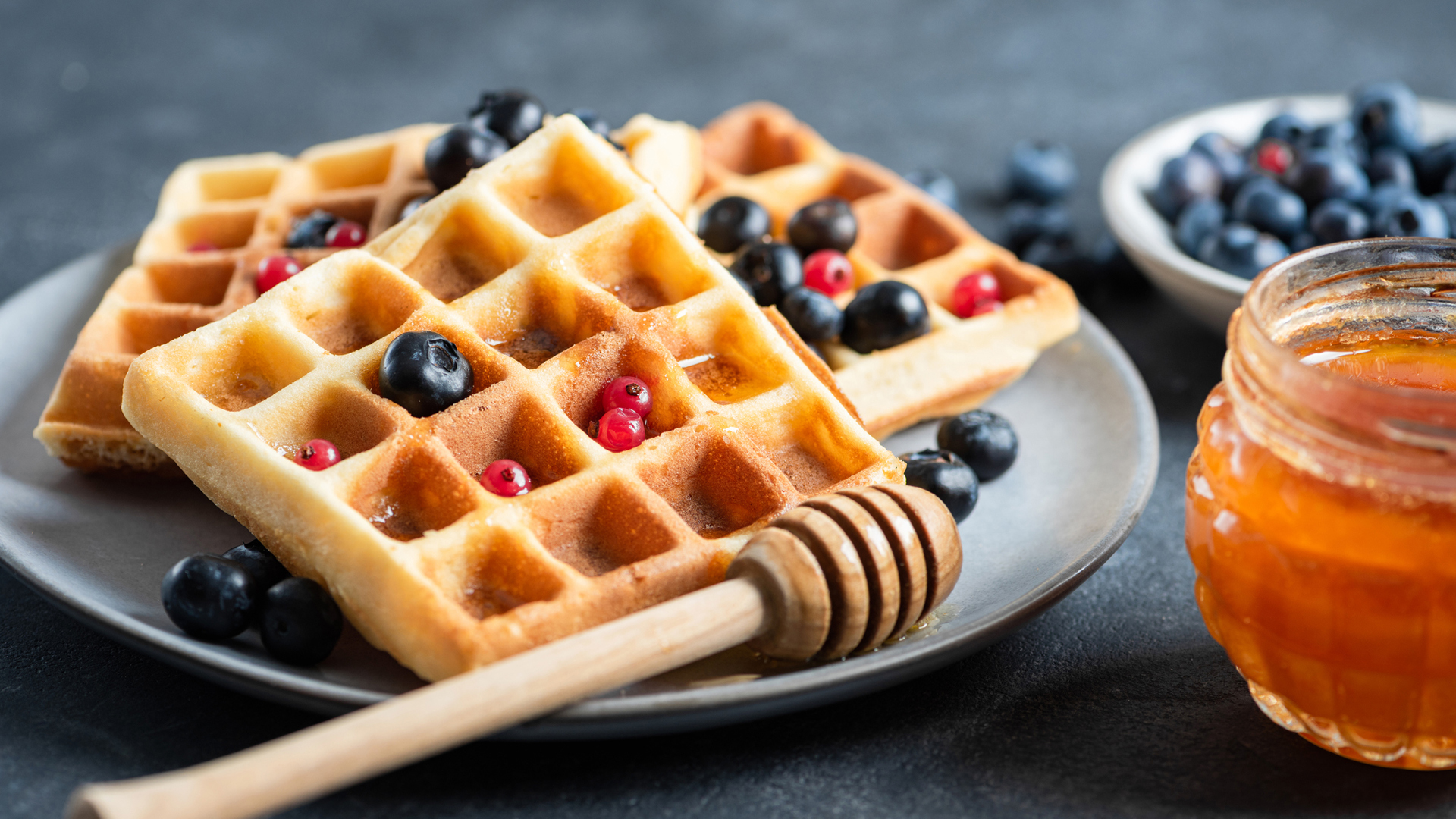
7. Easy vegan banana and yogurt muffins
These vegan muffins are a good source of protein as they use vegan protein powder and dairy-free high protein yogurt, which also helps keep them moist. They are made with ‘flax eggs’, and flaxseed is a good source of high quality plant protein.
As well as acting as a binder, ground flaxseed is really nutritious and packed with omega-3s and antioxidants. The banana gives a natural sweetness, too.
8. Peanut butter and jelly chia pudding
Chia seeds contain large amounts of filling fiber and protein, as well as omega-3 fatty acids, minerals and antioxidants.
In fact, they contain 3g of ‘complete protein’, meaning they contain all the essential amino acids. That might not sound like much, but pair it with the 4g of protein in a tablespoon of peanut butter or half a cup of milk and you have more protein than a large egg!
The ‘jelly’ in this dessert is made from a blueberry compote and orange juice. The chia pudding has an extra protein boost from the almond milk and peanut butter, too.
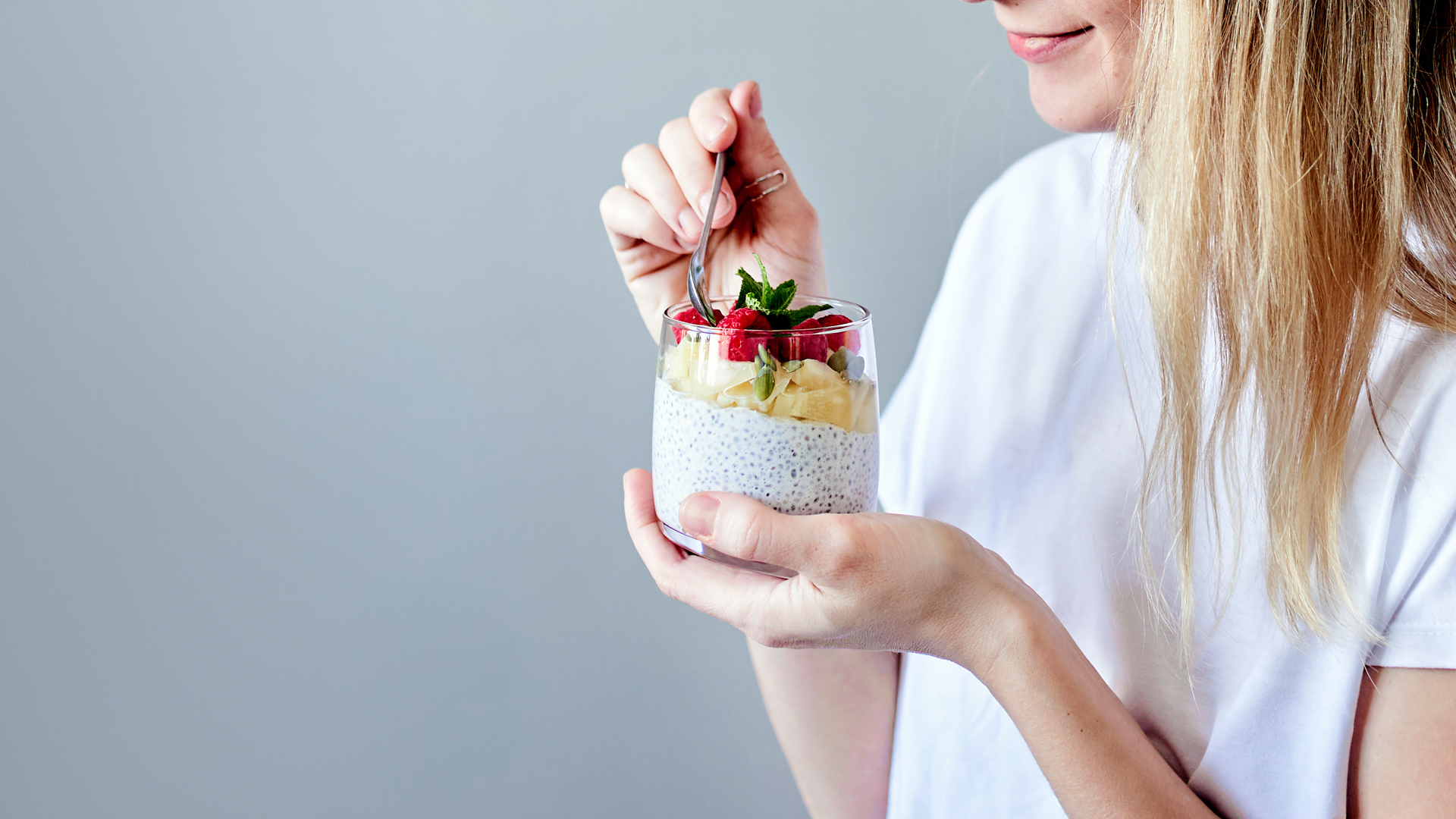
9. Vegan no-bake carrot cake energy balls
These bite-sized snacks are packed with natural proteins and healthy carbs to provide a sweet treat mid-afternoon or after dinner. They are made with raw carrot and dates, which are fantastically nourishing and give you a good mix of nutrients including iron, magnesium and potassium.
Your protein hit comes from the flaxseed (18g/100g), walnuts (15g/100g), almond butter (which has less fat than peanut butter, and more protein – 21g/100g). A pinch of cinnamon and ground ginger brings out the carrot cake flavors.
10. Pancakes
“One plain pancake made from eggs and milk provides 3.7g protein, and most people would eat about three so that's 11.1g protein. Top with a tablespoon of peanut butter and that’s another 3.4g,” says Kellow.
Plus, pancakes are rich in calcium, phosphorus, iodine and vitamin D – in the autumn and winter we need to get this vitamin from food and supplements as we are exposed to less sunlight.”
Want more ideas? Try these five easy protein pancake recipes.
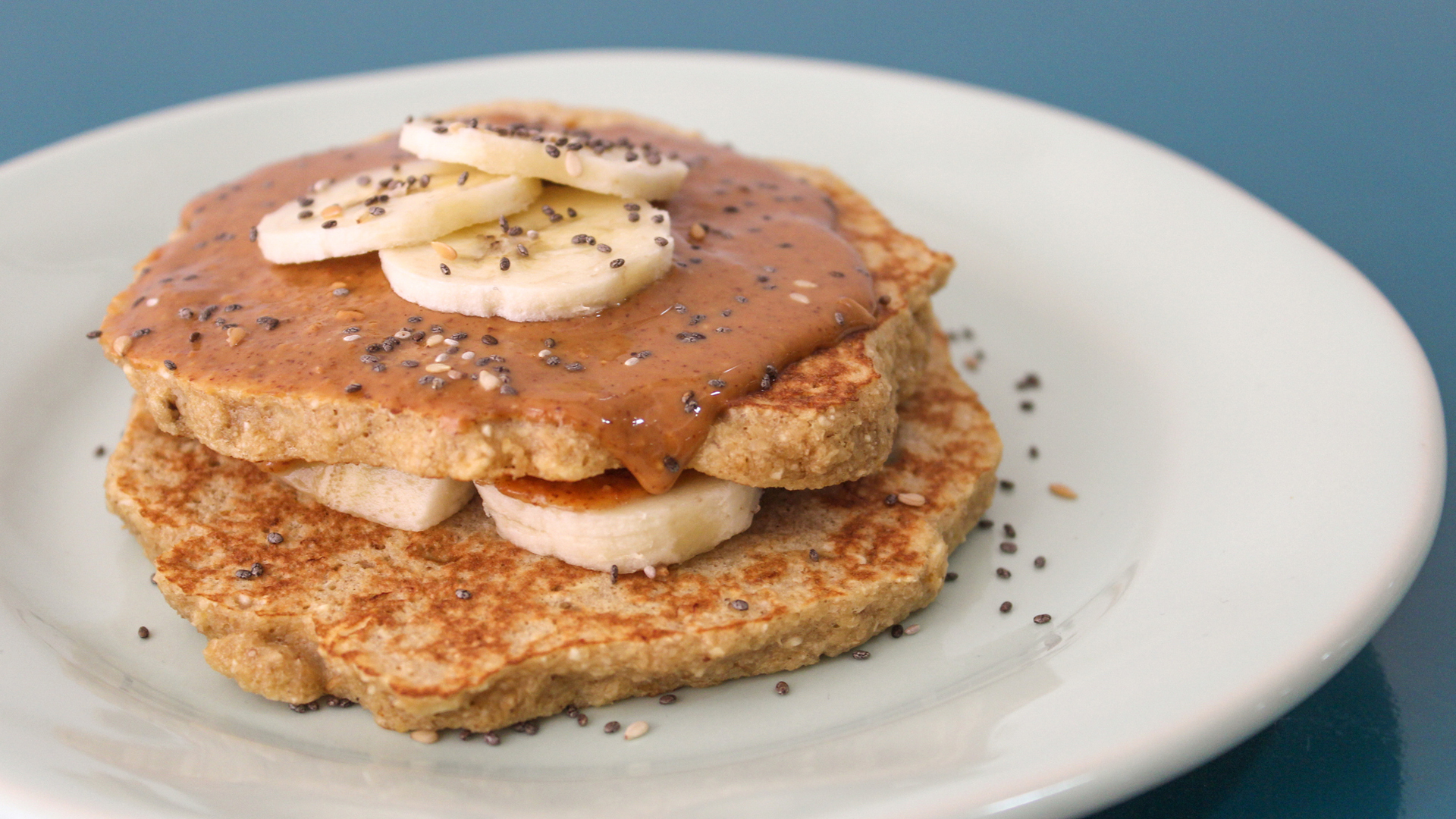
11. Rice pudding
“Made with milk, this is a low fat (and low saturated fat) and high protein dessert that is also a good source of potassium, calcium, phosphorus, vitamin B2 and iodine,” says Kellow.
“Half a can – 190g – of rice pudding provides 6.1g of protein and you could add a spoon of yogurt to boost the protein content.”
Maddy Biddulph is a freelance journalist specializing in fitness, health and wellbeing content. With 26 years in consumer media, she has worked as a writer and editor for some of the bestselling newspapers, magazines and websites in the US and UK.
She is also a qualified L3 personal trainer and weight loss advisor, and helps women over 40 navigate menopause by improving their physical and mental strength. At Maddy Biddulph Personal Training, she runs one-to-one and small group training for menopausal women who want to get fit to ease symptoms and feel like themselves again.
-
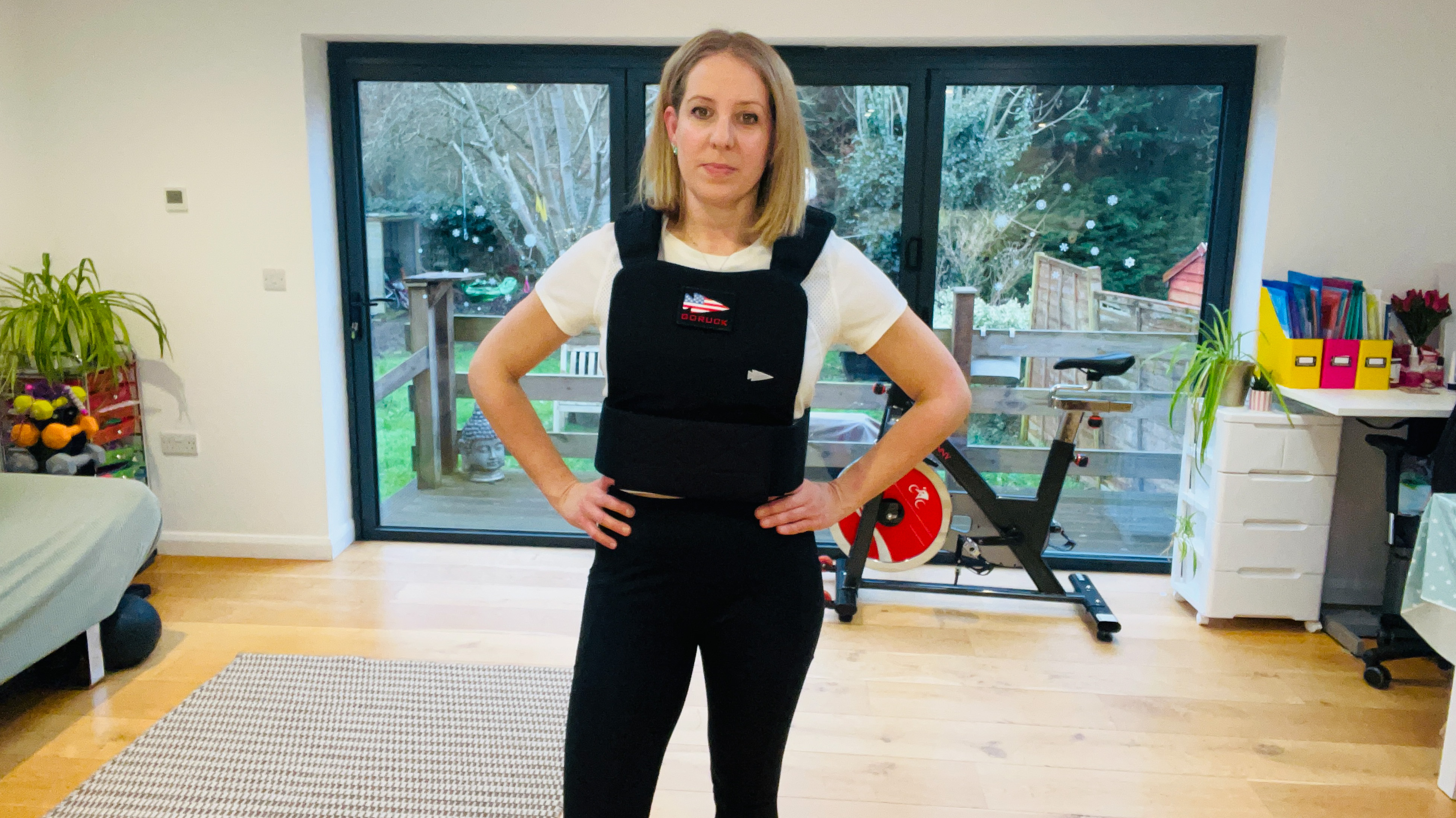 I’m a personal trainer and I tell all my clients to do this weighted workout to build muscle and bone health
I’m a personal trainer and I tell all my clients to do this weighted workout to build muscle and bone healthMake home training even more effective
By Maddy Biddulph Published
-
 I'm always stiff from sitting, so I tested out a 12-minute morning mobility routine to see if it could help
I'm always stiff from sitting, so I tested out a 12-minute morning mobility routine to see if it could helpThe short routine taught me a lot about my body
By Becks Shepherd Published
-
 Best vitamin D supplements
Best vitamin D supplementsBUYING GUIDE Take one of the best vitamin D supplements to give your mood a helping hand this winter
By Alice Ball Last updated
-
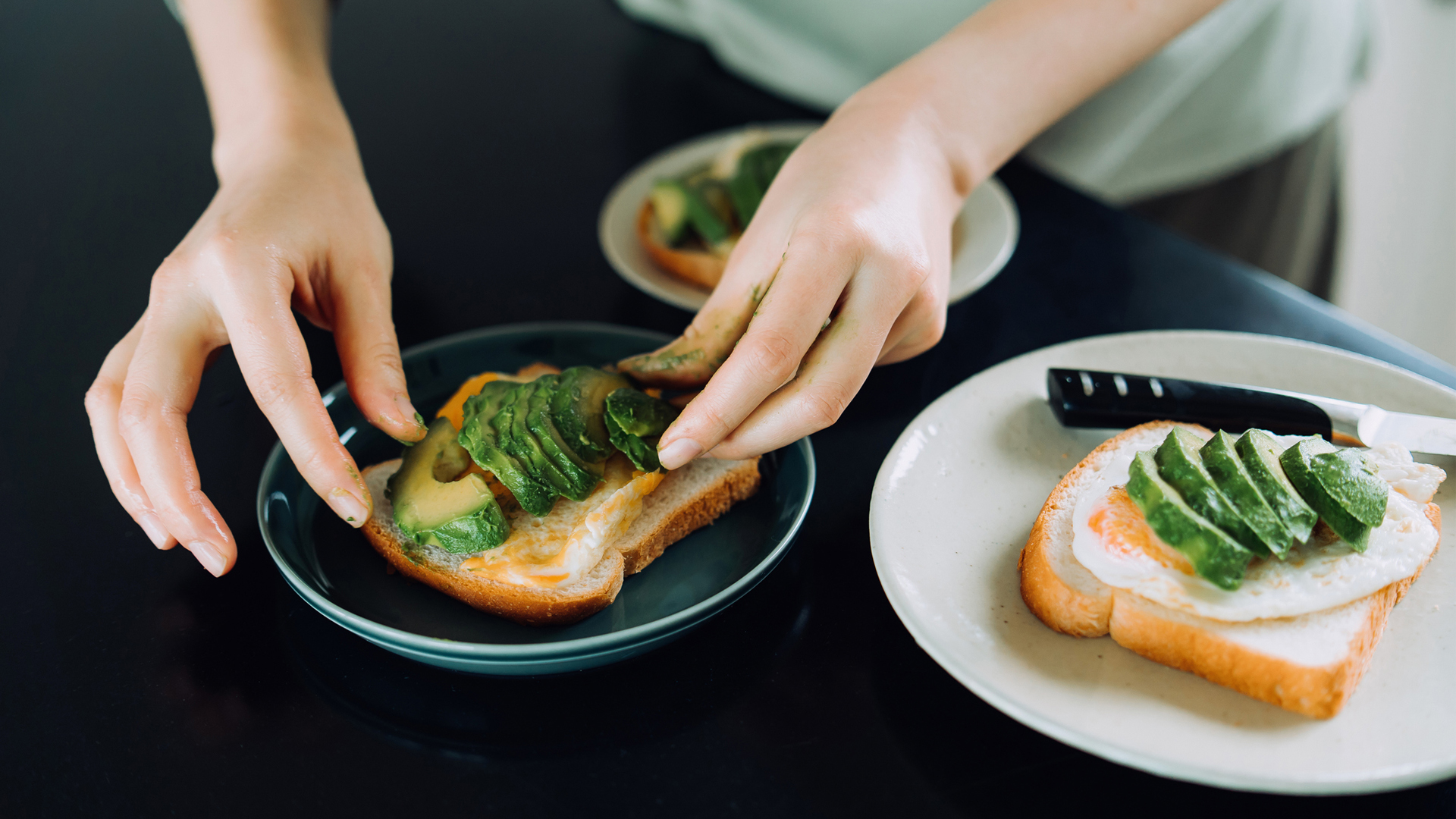 Six high fiber foods you should be eating
Six high fiber foods you should be eatingEnjoy these high fiber foods for better digestion and a healthier heart
By Anna Gora Last updated
-
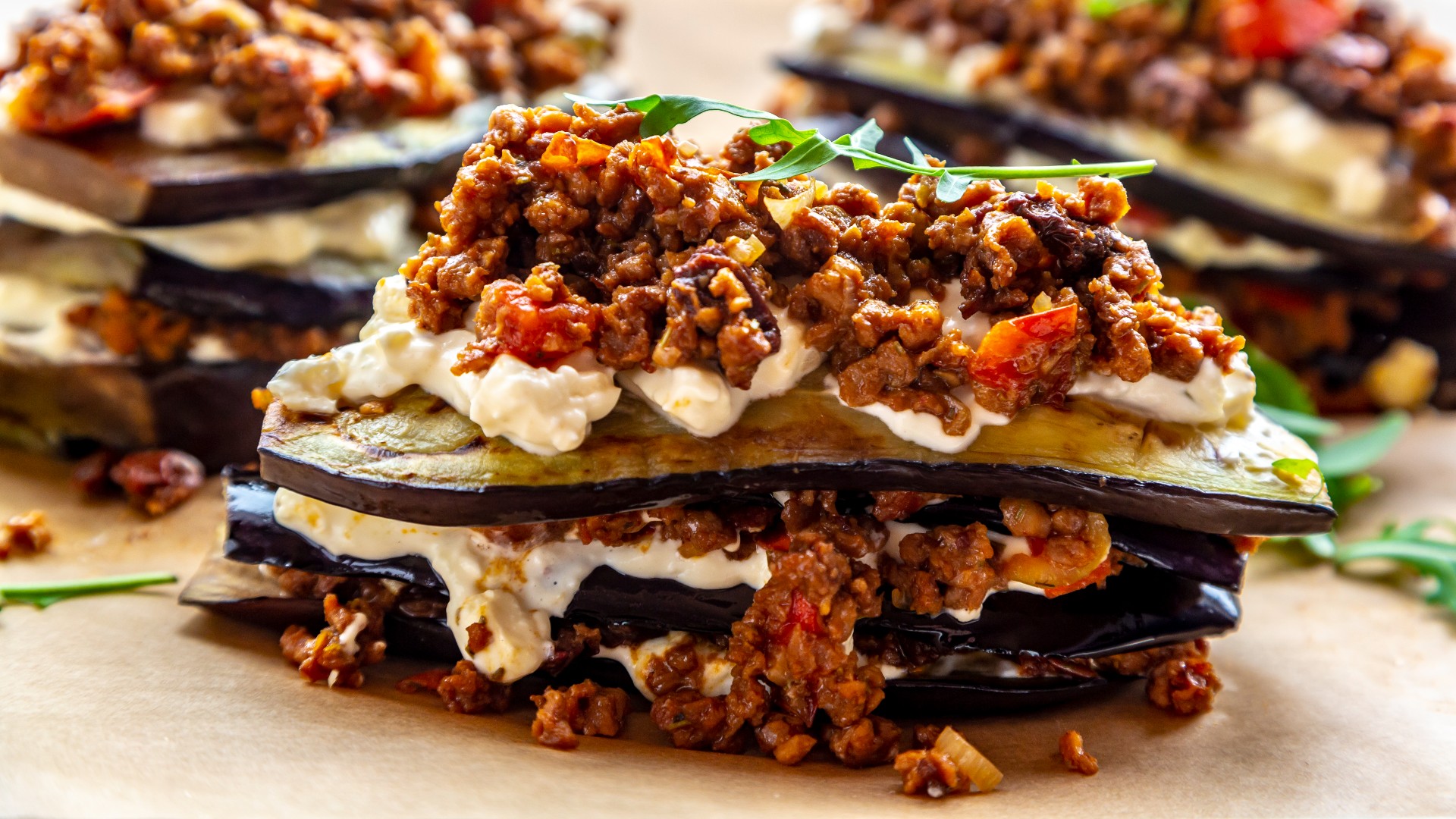 Easy low carb diet plan to help you eat well
Easy low carb diet plan to help you eat wellNutrition Looking for a low carb diet plan? We asked a dietician to share everything you need to know
By Alice Porter Last updated
-
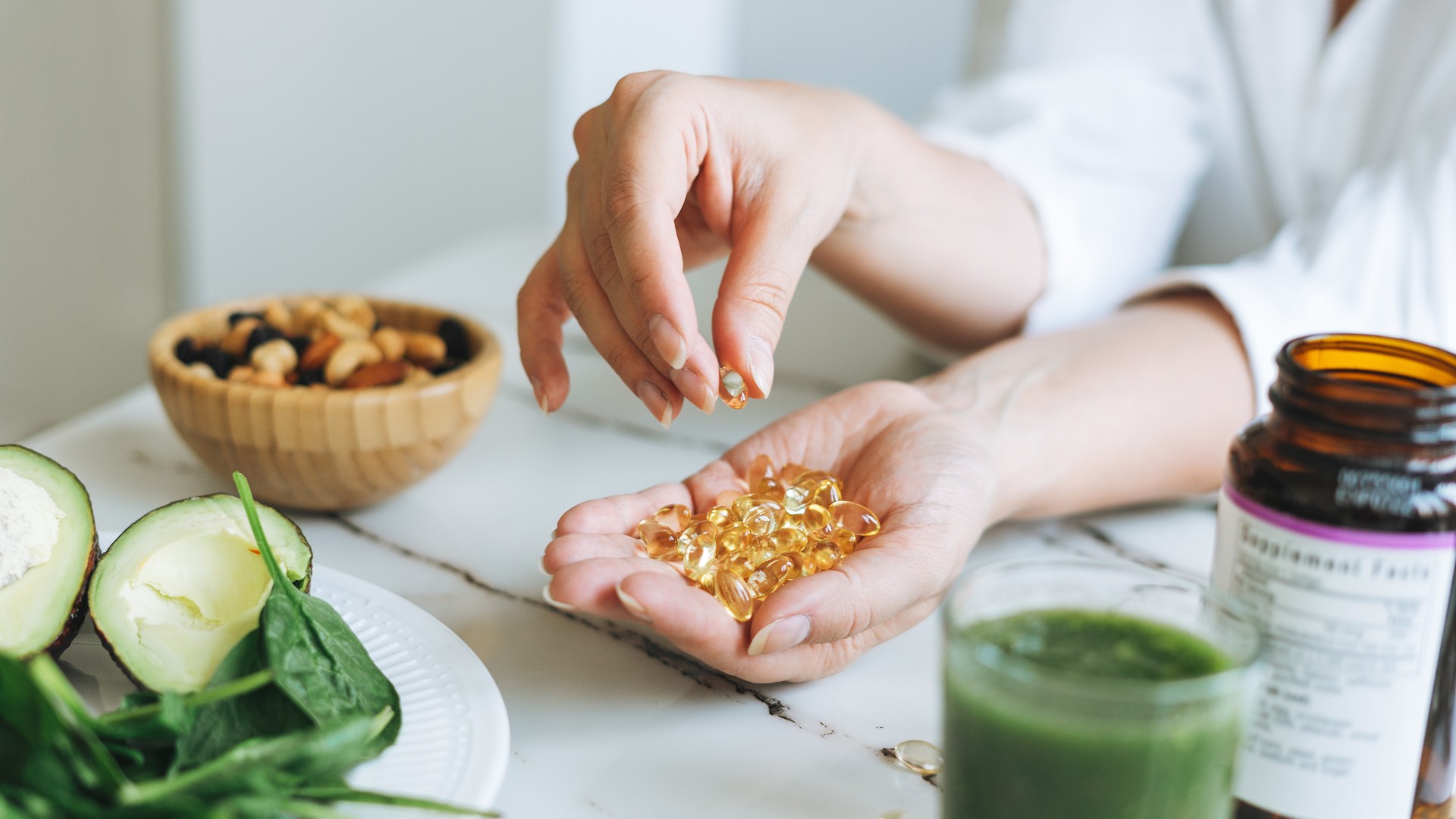 Do multivitamins work? Here’s what a nutritionist has to say
Do multivitamins work? Here’s what a nutritionist has to sayDo multivitamins work or is it better to take individual supplements? We find out which option is better and whether you need to supplement your diet at all
By Alice Porter Last updated
-
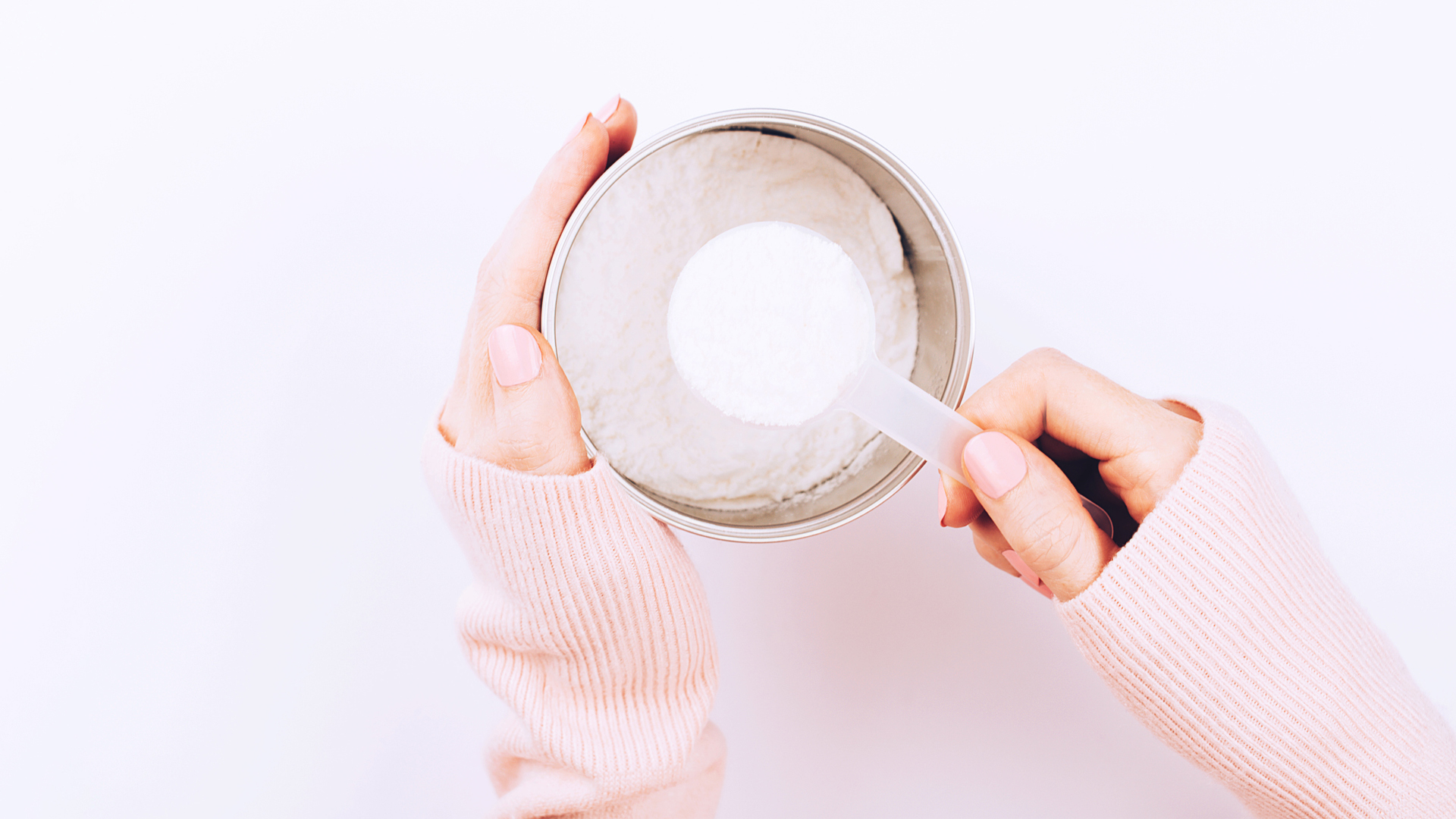 Collagen vs whey protein: what’s the difference?
Collagen vs whey protein: what’s the difference?Protein supplements are incredibly popular, but which type is best for your health? A dietician weighs up the pros and cons of collagen vs whey protein
By Alice Porter Published
-
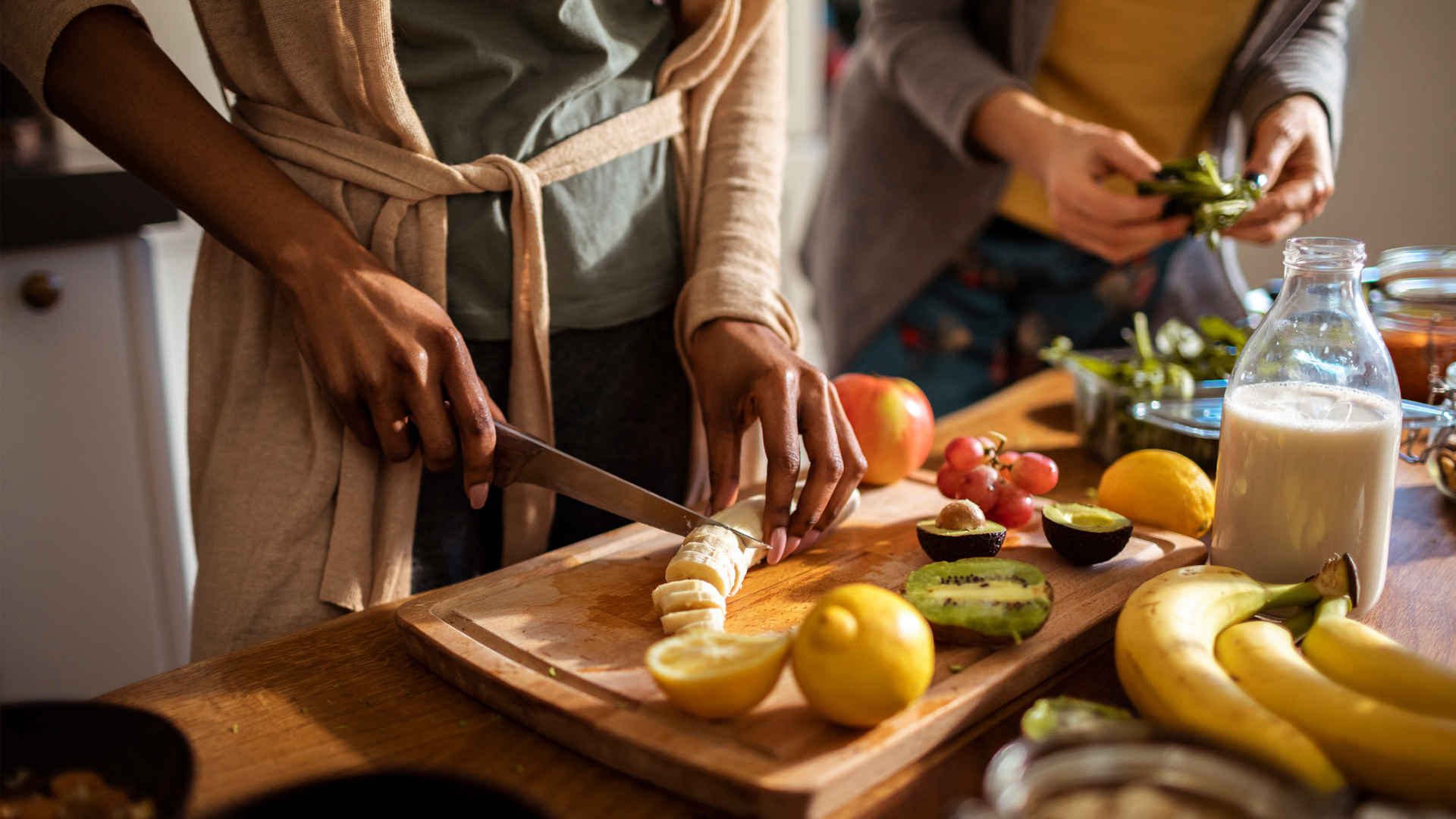 Foods for energy: what to eat to combat tiredness and fatigue
Foods for energy: what to eat to combat tiredness and fatigueFeeling tired? You may think that the only way to revive yourself is by going back to bed, but these foods for energy could help you feel full of life
By Alice Porter Published
-
 Which vitamins help anxiety?
Which vitamins help anxiety?Wondering which vitamins help anxiety? Here's everything you need to know
By Meg Walters Published
-
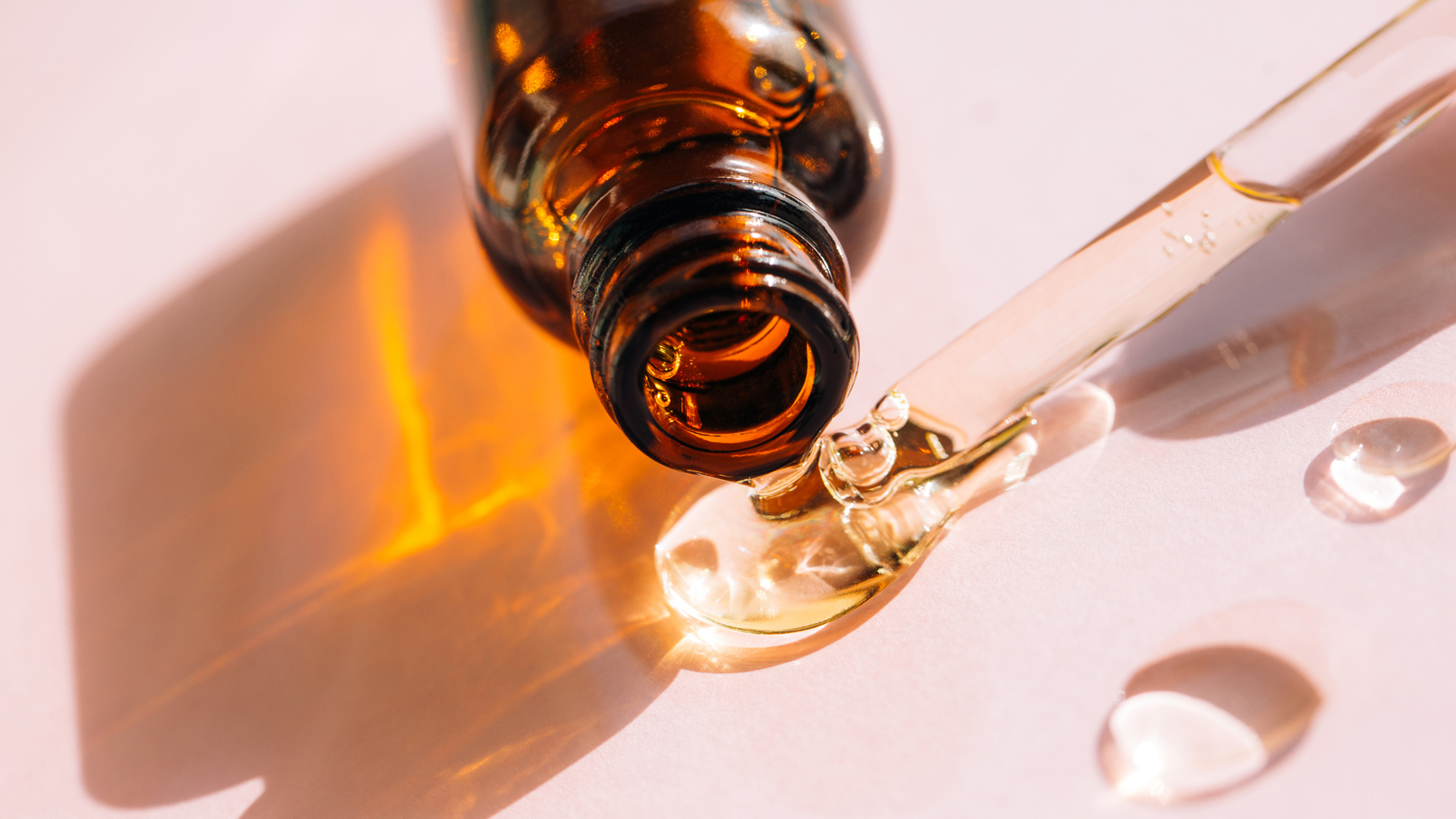 What is vegan collagen?
What is vegan collagen?Collagen is thought to support hair, skin and joint health — but what is vegan collagen and how can you reap the benefits of it on a plant-based diet?
By Alice Porter Published